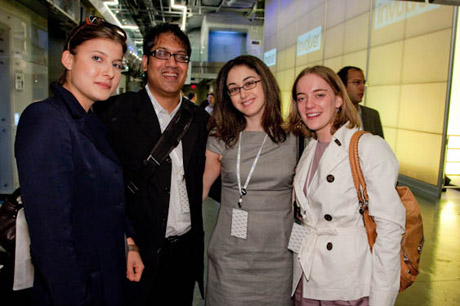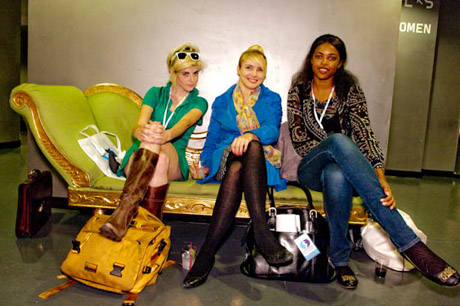
One speaker explained the audience as “the endpoint” of marketing campaigns; another discussed advertiser’s need to pursue “branding within the consumer experience” and to “engage the consumer to remain a customer for the long-term by experimenting with ways to ensure that the advertiser gets value out of the system.” In other words, destination websites need to serve a particular social function, to engage within a highly selective and targeted audience.
“Social network and content sites a year ago were based on direct marketing, which gauged consumer interactions with ‘impressions’ or click-throughs to destination websites. Now, it’s all about brand marketing, which is still considered to be an innovative approach to advertising; companies will budget their involvement accordingly. The whole key is bringing a targeted reach. Good engagement and system engineering are important; for example, we need to adopt effective online currency, not unlike the 30-second ad spot on television,” remarked Martin Green, COO of Meebo, an online service designed to allow users to interact with a number of instant messaging platforms simultaneously.”
Rather than bombarding the consumer with often irrelevant and impersonal direct advertising methods, the key to brand awareness across a broad demographic is through the individualization of the marketing message. Jim Wales, founder of Wikipedia and, more recently, the not-for-profit Wiki Foundation (designed to encourage the growth and development of free content in world communities) remarked that term “crowdsourcing” has become increasingly negative, expressing a cynical view of the consumer as an exploitable agent of free content. Instead, Wales invited us all to view the destination website as a bowling alley; again, not a favorite place of mine but an apt portrayal of the industry ideal. “I don’t need to convince people to bowl,” he remarked “it’s fun, there’s a lot of stuff to do at a bowling alley. I’m providing a place for people to come to do what they want to do.” The organic growth of a unique online community inherently takes a long time. A lot of things today are judged by the explosive growth of companies like Facebook or MySpace. The difference between these sites and others is that they merely provide the tools to connect with existing communities…The goal of the internet should be to provide the world with free access to the sum of all human knowledge. We are transforming society, shifting power from the brand to the consumer.”
Companies invest millions of dollars a year on CRM software designed to shed light on consumer behaviors and projected trends. Now, companies can hone in on a very specific demographic; with brand recognition, companies like Netflix can monopolize on a user’s intent to sign up to the service by providing added incentive in the form of offers; free trials with one-year signing are advertised in the middle of a free-to-play online game.
Of course, the brand must be content with what Jim Wales described as the social transformation; in this case, it is the shift of power. The internet has given the public unprecedented power over brands and their products. At the end of his speech, Wales held up his phone, allowing the silver Sidekick to momentarily flash in the overhead light. He expressed vocal wonderment at T-mobile’s ongoing internet blackout. “Internet has been down for four days,” he explained, casually flipping open the keyboard, the screen glowing against the black projection screen. “Minutes after the blackout, T-mobile users unleashed a fury on Twitter. Now, this is obviously bad for T-Mobile. I got the phone because I liked the keyboard; it was perfect for typing e-mails. If only I could receive them.”
Cyber Space Classified – Deadly As Cocaine.







